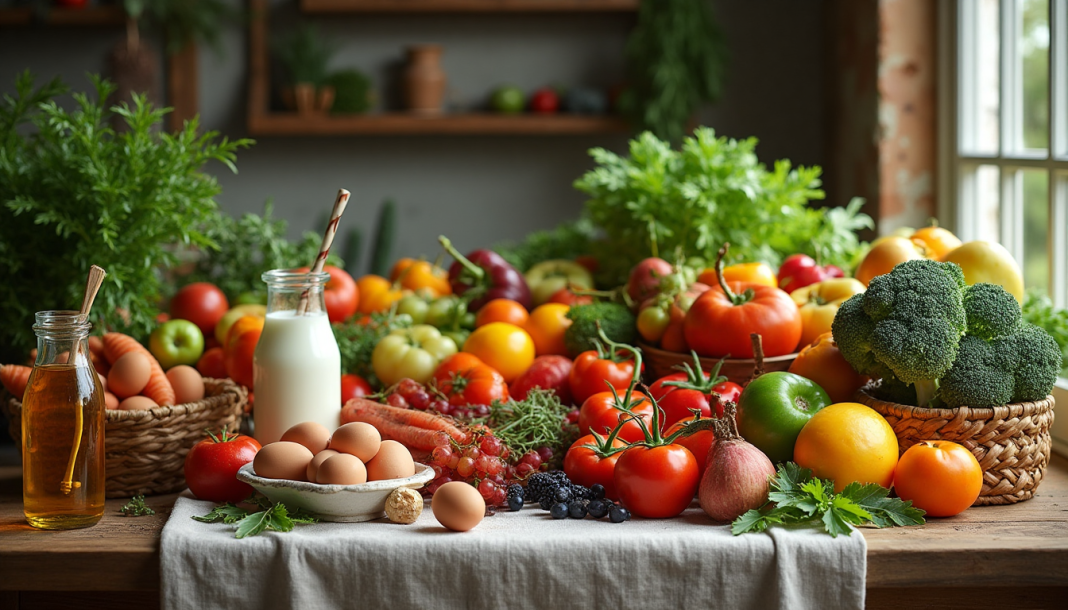Imagine biting into a juicy tomato or crisp apple and knowing exactly where it came from—who grew it, how it was harvested, and what path it took to reach your kitchen. In our fast-paced, convenience-driven world, it’s easy to forget that food doesn’t magically appear on grocery store shelves. It has a story. And understanding that story can radically shift the way we eat and how we nourish ourselves.
As a certified nutritionist, I’ve seen firsthand how reconnecting with the origins of our food not only improves diet quality but also helps us make more intentional, sustainable, and empowering choices. This isn’t about perfection or growing your own produce (though kudos if you do!)—it’s about gaining awareness and making everyday meals more meaningful, nutrient-rich, and aligned with your values.
In this article, we’ll trace the journey of food from farm to table and explore how that journey affects its freshness, nutritional value, environmental impact, and your overall wellness.
The Farm: Where Nutrition Begins in the Soil
Every bite begins with the earth. The quality of the soil, the method of farming, and even the time of harvest all influence the nutritional density of your food.
🌱 Conventional vs. Organic Farming
- Conventional farming often uses synthetic pesticides, fertilizers, and genetically modified organisms (GMOs). While these practices can yield larger harvests, they may impact soil health and reduce microbial diversity.
- Organic farming, on the other hand, emphasizes crop rotation, natural composting, and reduced chemical use, which often leads to more nutrient-rich soil and produce with higher antioxidant levels.
📚 Research Insight: A study published in the British Journal of Nutrition found that organic crops had significantly higher levels of antioxidants and lower pesticide residues than conventionally grown crops.
So yes, how your food is grown truly matters—and the soil is where the magic starts.
The Harvest & Transport: Time is Nutrient Currency
Once a fruit or vegetable is harvested, its nutritional value begins to decline. This is natural, but the time it takes to travel from farm to store can determine how much of its original goodness makes it to your plate.
Here’s What Happens Post-Harvest:
Vitamin loss: Produce like spinach, broccoli, and green beans can lose up to 50% of their vitamin C within a week of harvest.
Oxidation: Enzymatic processes begin to degrade sensitive nutrients, especially antioxidants and certain B vitamins.
Chilling & packaging: While refrigeration slows spoilage, it doesn’t fully halt nutrient decline.
🧠 Real-Life Tip: Choose local or seasonal produce when possible—it often travels shorter distances, meaning it’s fresher and more nutrient-dense when you eat it.
Processing: When Convenience Comes at a Cost
Not all food processing is bad. Some forms (like freezing, fermenting, or drying) can actually preserve or enhance nutrients. But ultra-processed foods, think boxed snacks, sugary cereals, or packaged “meal replacements”, are a different story.
The Hidden Costs of Ultra-Processing:
Added sugars, refined oils, and preservatives replace real nutrients.
Fiber and micronutrients are often stripped away during manufacturing.
Artificial flavors or “natural flavors” can confuse taste perception, making whole foods seem bland in comparison.
📚 Research Insight: A 2019 study in BMJ found that people who ate more ultra-processed foods had a higher risk of cardiovascular disease and mortality, even when adjusting for calorie intake and other lifestyle factors.
If your ingredient list looks more like a chemistry project than a recipe, it’s probably better left on the shelf.
The Table: Making Mindful, Nutrient-Rich Choices
By the time food hits your plate, your choices, how you store, prepare, and pair foods, continue to impact its nutritional profile.
Boost Nutrition at the Table:
- Store wisely: Keep leafy greens in breathable bags with paper towels to preserve vitamin C and folate.
- Cook smart: Light steaming retains more nutrients than boiling. Avoid overcooking cruciferous veggies like broccoli and Brussels sprouts.
- Pair for absorption: Combine iron-rich plant foods (like lentils or spinach) with vitamin C sources (like lemon or bell pepper) to boost iron uptake.
Real-Life Example:
Pair roasted sweet potatoes (rich in beta-carotene) with a drizzle of olive oil to enhance absorption of this fat-soluble nutrient.
Eating isn’t just about the “what” – it’s about the “how.” And small shifts can make a big impact.
From Awareness to Action: How to Make Sustainable, Nourishing Choices
Understanding your food’s journey doesn’t mean you need to overhaul your lifestyle. It’s about making informed, doable changes that benefit your health and the planet.
Sustainable + Nutritious = Win-Win:
Buy local when possible: Farmers markets or CSA (community-supported agriculture) boxes offer fresher, often more sustainable options.
Seasonal is smarter: It’s more nutrient-dense, more affordable, and better for the environment.
Grow a few basics: Even herbs on your windowsill can bring you closer to your food.
Read labels: Aim for whole-food ingredients you can pronounce and visualize.
🛒 Mindful Shopping Tip: Before you add something to your cart, ask: “Would my grandmother recognize this as food?” If not, it might be worth skipping.
Reconnect with Your Food, Reclaim Your Health
Every apple, every grain of rice, every leafy green has a story. The more we understand that journey—from farm to table—the more empowered we become to make choices that nourish our bodies, honor the planet, and bring more presence to our meals.
Actionable Takeaways:
- Choose local, seasonal, and organic when you can; it’s fresher, tastier, and often more nutritious.
- Minimize ultra-processed foods and focus on whole, minimally refined ingredients.
- Use smart storage and cooking techniques to preserve nutrients.
- Embrace mindful eating as a way to connect with what’s on your plate.
The best food choices are the ones that nourish both your body and your awareness. Because when you know your food’s story, your meals become more than just fuel; they become a connection.



